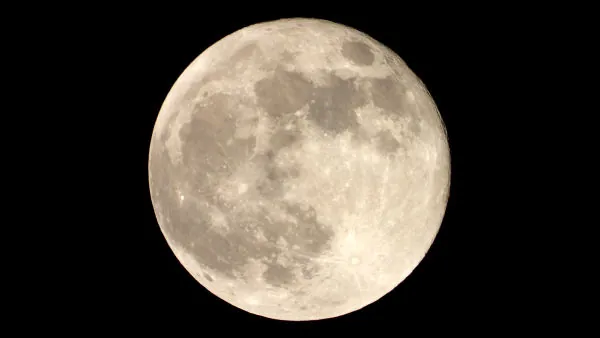
Don’t Miss This! The Final Supermoon of 2024 Lights Up the Night Sky
2024-11-14
Author: Jacob
Get Ready for the Full Beaver Moon!
Sky-gazers, mark your calendars! This Friday night, witness the spectacular Full Beaver Moon, shining brightly as the final supermoon of 2024 and the last chance to see one until late 2025. If the skies are clear in your area over the next few nights, take a moment to look up and appreciate our beautiful Moon. NASA indicates the Full Moon peaks at 4:29 p.m. EST on Friday, November 15, but it will look full from Thursday night through Saturday night.
But what exactly is the Beaver Moon?
The term 'Beaver Moon' has its origins in folklore. It’s the name traditionally given to the November full moon and refers to the time of year when beavers are preparing for winter, seeking shelter in their lodges after gathering food. The name is part of a list developed by Farmer’s Almanacs since the 1930s, drawing from both Colonial American traditions and Native American lunar calendars from the Algonquin tribes. Other names for this moon include Frost Moon and Whitefish Moon, depending on cultural references.
Interestingly, this moon isn't just an astronomical event; it has cultural significance across the globe. In Cambodia, it marks the start of the Water Festival, a vibrant celebration with dragon boat races. Meanwhile, in Sri Lanka, Buddhists observe Il Full Moon Poya, a holiday filled with religious significance. Hindu communities commemorate Kartik Purnima during this time, celebrating the victory of good over evil.
What Makes This Supermoon Special?
Not all full moons are created equal — this Friday’s supermoon will appear larger and brighter than its typical counterparts. Supermoons happen when the full moon coincides with the Moon’s closest point to Earth in its orbit, a phenomenon known as 'perigee'. Fred Espenak, a former NASA scientist, noted that this particular supermoon will shine around 13% brighter than an average full moon and over 25% brighter than a full moon during its farthest point (apogee).
Don’t Wait for the Next One!
In 2024, this November supermoon is the last of four to occur. Following this, full moons will gradually decrease in size and brightness until the next supermoon appears on October 6, 2025. For those who miss out, it could be a long wait!
Look to the Skies!
On the night of November 15-16, not only will the Full Beaver Moon be the brightest object in the sky, but it will also be accompanied by Jupiter and Saturn, two of the most prominent planets. Jupiter, in particular, is growing brighter as it approaches its closest point to Earth this December. With a good telescope or binoculars, you might even catch glimpses of its four largest moons: Io, Europa, Ganymede, and Callisto.
Lovers of the night sky shouldn't miss the chance to check out the prominent constellation of Orion nearby, along with brilliant stars like Sirius and Procyon. And if you’re away from city lights, you might also spot a few shooting stars from the Taurid meteor shower, which, despite having peaked earlier this month, is still showering the Earth with occasional meteors.
So, whether you're a seasoned astronomer or a curious newbie, make sure to step outside over the next few nights and bring your friends along for a cosmic experience you won’t forget! Don't let this supermoon slip by — it's a celestial event that's sure to light up your night!









 Brasil (PT)
Brasil (PT)
 Canada (EN)
Canada (EN)
 Chile (ES)
Chile (ES)
 España (ES)
España (ES)
 France (FR)
France (FR)
 Hong Kong (EN)
Hong Kong (EN)
 Italia (IT)
Italia (IT)
 日本 (JA)
日本 (JA)
 Magyarország (HU)
Magyarország (HU)
 Norge (NO)
Norge (NO)
 Polska (PL)
Polska (PL)
 Schweiz (DE)
Schweiz (DE)
 Singapore (EN)
Singapore (EN)
 Sverige (SV)
Sverige (SV)
 Suomi (FI)
Suomi (FI)
 Türkiye (TR)
Türkiye (TR)